If you’re a marketer trying to crack the Facebook Algorithm 2025, you’re not alone, and you’re definitely not late
With over 3 billion monthly active users, Facebook still dominates the social media landscape.
But as usual, things are changing fast.
The new Facebook algorithm is smarter, sharper, and a lot more selective about what gets seen.
Gone are the days when a good post could go viral just by existing.
Now, the algorithm on Facebook is deeply tuned to user behavior, intent, and content quality.
So if your reach has mysteriously tanked, you’re likely feeling the effects of recent Facebook changes and the broader Meta algorithm change
This post breaks down exactly how the Facebook algorithm works in 2025, what’s driving these changes, and how you can use a Facebook scheduler to make the most of it.
Let’s see what’s new, what’s changed, and what it means for your brand.
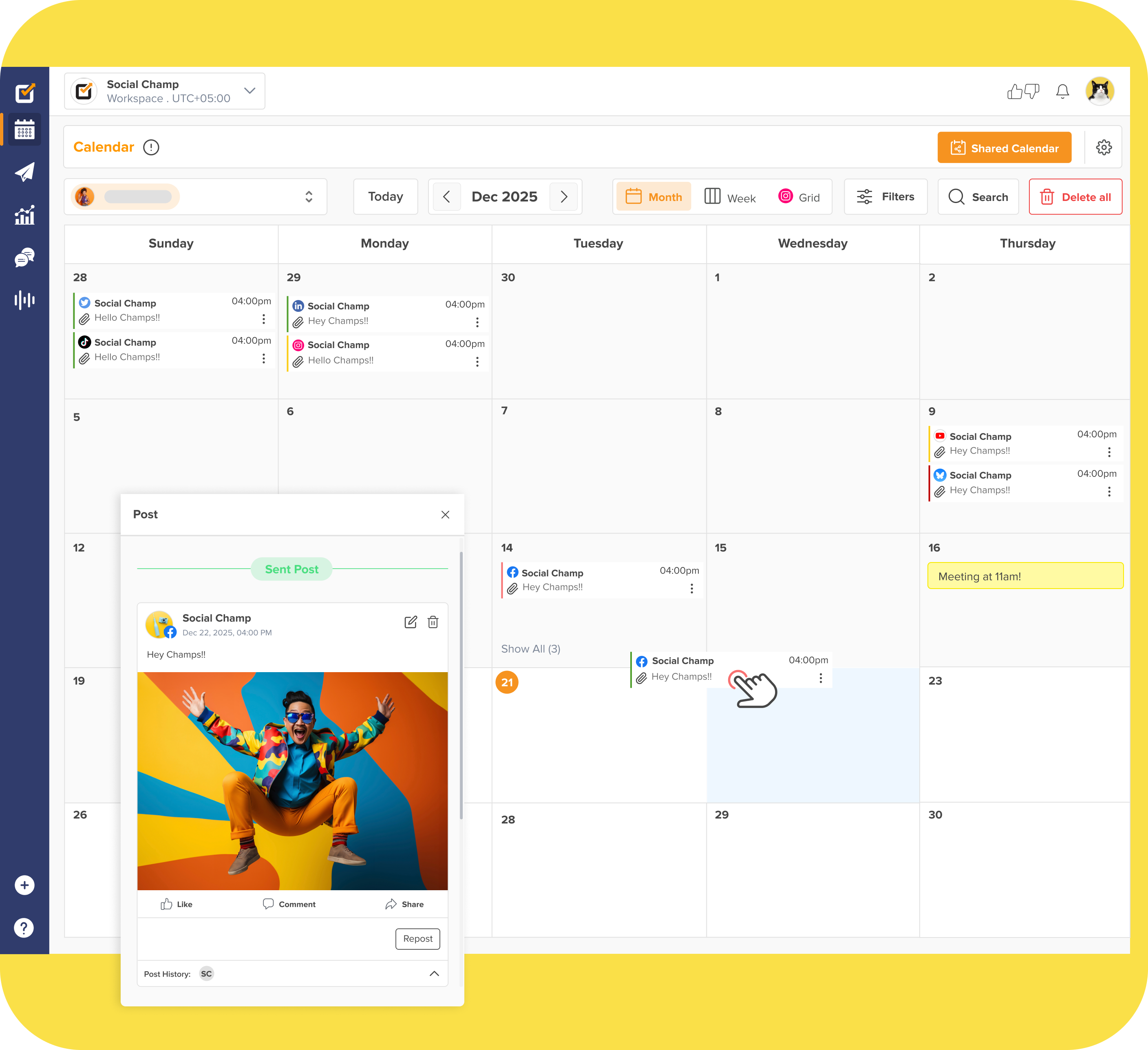
Need a Smarter Way to Plan Your Posts?
Social Champ’s easy-to-use scheduling tools ensure your content reaches the right audience at the perfect time, all the time.
Short Summary
- Facebook’s 2025 algorithm prioritizes meaningful engagement, rewarding authentic interactions over vanity metrics.
- Content quality and relevance, rather than frequency, are critical factors in boosting organic reach.
- AI-powered relevance scores help determine what users see based on their past behavior and preferences.
- Leveraging Facebook’s native tools like Meta Business Suite and post scheduling can streamline content strategy and enhance engagement.
- Diversifying your content mix with visuals, videos, and interactive posts can drive higher user interaction and engagement.
- Consistent monitoring of analytics and insights is key to adjusting strategies and optimizing content performance over time.
- Understanding user behavior and adapting your content to meet their preferences is essential for staying relevant in the Facebook ecosystem.
What Is the Facebook Algorithm? [Brief History]
The Facebook algorithm is a set of rules and processes that determine what shows up in your feed and when.
Every time you scroll through your News Feed, the algorithm is at work, deciding which posts you’re most likely to engage with based on your activity and interests.
It’s how Facebook keeps your feed personalized, showing you content that it thinks you’ll find relevant or interesting
Featured Article: 10 Best Digital Marketing Platforms for 2025 – Boost Your Growth
The Early Days: Edgerank and Simple Metrics
In 2009, Facebook introduced its first algorithm, known as EdgeRank.
This system considered three main factors
- Affinity: The closeness of the relationship between the user and the content creator.
- Weight: The type of interaction (e.g., comments were weighted more heavily than likes).
- Time Decay: How recently the content was posted.
EdgeRank aimed to prioritize content that users were more likely to engage with, but it was relatively straightforward compared to today’s standards.
In 2011, Facebook stopped using EdgeRank and moved on to the next algorithm upgrade.
Evolution to Complex Machine Learning
By 2013, Facebook was advancing more and more in its machine-learning algorithms that considered thousands of factors.
These included:
- User behavior: Clicks, shares, and time spent on posts.
- Content type: Videos, images, links, and their respective engagement rates.
- Device and connection: Tailoring content based on whether users were on mobile or desktop, and their internet speed.
This shift allowed Facebook to personalize feeds more effectively, but it also made the algorithm more opaque to users and marketers.
The 2018 Shift: Prioritizing Meaningful Interactions
In 2018, Facebook announced a significant Meta algorithm change.
The algorithm would now prioritize “meaningful interactions.”
This meant that content from friends and family, as well as posts that sparked conversations, would be favored over passive consumption.
For marketers, this underscored the importance of creating engaging content that encourages comments and discussions.
The 2025 Era: AI-Driven Personalization
Fast forward to 2025, and the Facebook Algorithm has become even more advanced, leveraging artificial intelligence to deliver highly personalized content.
Key developments include:
- AI-Powered Content Discovery: Facebook now uses AI to recommend content from creators and brands that users don’t follow, based on their interests and behaviors.
- Enhanced Engagement Metrics: The algorithm places greater emphasis on long-form comments and discussions, rather than simple likes or shares.
- Video and Reels Emphasis: Short-form videos and Reels are given priority in the News Feed, reflecting user preferences for dynamic content.
These Facebook changes mean that marketers must focus on creating high-quality, engaging content that resonates with their target audience.
Understanding and adapting to the Facebook Algorithm 2025 is essential for maintaining visibility and engagement on the platform.
How the Facebook Algorithm Works in 2025
According to Meta CEO Mark Zuckerberg, about 30% of posts in Facebook users’ feeds are now delivered by AI-powered recommendations.
In other words, almost one-third of what people see is “recommended content” from sources they don’t follow, selected by Facebook’s machine-learning ranking system.
Over the past few years, Facebook has rolled out dozens of AI models and prediction engines behind its Feed.
This means the algorithm in 2025 is a complex, AI-first system that uses thousands of signals from user behavior and content attributes to score every post.
In this section, we will break down the key pieces of Facebook’s 2025 algorithm and what marketers need to know:
Understanding Facebook’s Content Classification
At its core, Facebook’s goal is to deliver content that users will find meaningful and engaging, whether that content comes from their immediate social circles or creators and pages they’ve never encountered before.
The platform now categorizes content into three main types:
- Connected Content – Posts from friends, pages you follow, and groups you’ve joined.
- Recommended Content – Curated by AI based on your activity and interests, even from sources you don’t follow.
- Advertisements – Served through targeted marketing strategies, distinct from the organic algorithmic ranking system.
With this framework, Facebook’s AI doesn’t just respond to user input—it anticipates it, creating a personalized feed for every user out of millions of possible content combinations.
The Four Pillars of the 2025 Facebook Algorithm
To understand how Facebook ranks and presents content, we need to break down its operation into four major components:
- Inventory
This is the foundational layer. Each time you open Facebook, the algorithm collects all the potential content that could appear in your Feed. This includes posts from your friends, groups, liked pages, and now, AI-selected recommendations from across the platform. Content that violates Facebook’s Community Standards—such as posts involving hate speech, misinformation, or unsafe behaviors—is excluded immediately. This helps ensure a baseline of safety and relevance in every feed. - SignalsSignals are data points Facebook uses to assess the relevance of each post. These include:
- Who posted it – Content from accounts you engage with more frequently is prioritized.
- Post type – If you often interact with videos, Facebook will show you more videos.
- Engagement levels – Posts with higher likes, comments, and shares may be seen as more interesting.
- Post metadata – Includes factors like the post’s age, location tags, and time of day it was posted.
- User-specific behavior – Your internet connection speed, local time, or even whether you’re more likely to scroll in the morning or at night, all feed into the algorithm’s decisions.
In total, Facebook considers hundreds of thousands of these signals to build a comprehensive picture of what each user values.
- Predictions Using the signals, Facebook’s AI predicts how likely you are to interact with any given post.
It evaluates whether you’ll:- Like or comment on the post
- Watch a video all the way through
- Click a link
- React emotionally with emojis
- Share it with others via Messenger or WhatsApp
These predictions are not static.
The algorithm learns from every action (or inaction) you take, refining its model of your preferences continually.
- Relevance ScoreAfter assessing all inventory and signals and running predictive modeling, each post receives a Relevance Score. Posts with higher scores appear earlier in your Feed while lower-scoring ones are either pushed further down or excluded altogether. Facebook also ensures that your Feed remains diverse by spacing out content from the same source and mixing media types to avoid fatigue. For instance, it may alternate between a video, a photo carousel, and a link post rather than showing three videos from the same page consecutively.
How Facebook Recommends Content in 2025
The same four-step process applies here (Inventory → Signals → Predictions → Score), but the signals for recommended content are slightly different.
They may include:
Whether you’ve previously liked similar content
- If you’ve engaged with posts on the same topic
- Whether you’ve clicked ‘Show more’ or ‘Hide’ on comparable posts
- How long have you spent watching or reading similar content
To be included in recommendations, content must meet not just Facebook’s basic Community Standards, but also a stricter set of Recommendations Guidelines.
This ensures that content shown to new audiences is safe, informative, and high-quality.
- Posts that are disqualified from recommendations may include:
- Low-quality or sensationalized content (clickbait, spam, etc.)
- Posts that discuss regulated products (like tobacco or alcohol)
- Content that users have flagged as offensive or misleading
- Unverified news articles or health claims
The Facebook Reels Algorithm in 2025
Reels are short-form videos that Facebook pushes heavily due to high engagement metrics.
Zuckerberg has repeatedly emphasized we’re in the “video era,” noting that Facebook feeds “then became mostly photos and then became mostly video when mobile networks became fast enough.”
Recent data show young adults spend almost 60% of their Facebook time watching videos, and more than half of young users watch Reels every day.
To capitalize on this, Meta has revamped the platform to highlight video.
In October 2024, it announced a full-screen Video tab that will house both short-form and long-form videos in a single, immersive player.
Key ranking factors for Reels in 2025 include
- Watch time and completion rate – Videos that are watched to the end perform better.
- User interactions – Likes, comments, shares, and even whether a user shares the Reel to WhatsApp or Messenger matter.
- Content originality – Recycled or watermarked videos (like those from TikTok) are penalized.
- Use of trending elements – Incorporating popular audio tracks, effects, or topics gives content a visibility boost.
- Quality and format – Vertical orientation, clean visuals, and native editing tools like filters or captions help push content higher in the algorithm.
How Facebook Stories Are Ranked in 2025
Stories, much like Reels and Feed content, are ranked using the same four-stage system:
Inventory, Signals, Predictions, and Relevance.
However, due to their ephemeral nature, Facebook Stories prioritize freshness and user interaction history.
Facebook considers:
- Who posted the Story?
- Your previous interactions with that person or page
- How frequently do you watch their stories
- Engagement with similar content
To increase reach via Stories, creators are encouraged to:
- Post in vertical format
- Use stickers, polls, and calls to action
- Create interactive or visually compelling stories
- Maintain a consistent posting rhythm
Facebook Marketplace and the Algorithm
Even Facebook Marketplace now uses the same foundational algorithm.
Your shopping experience is personalized based on:
- Your browsing and purchase history
- Saved items and categories
- Engagement with similar listings
- Location preferences
Users can still opt out of personalized experiences by browsing categories manually, but this limits the algorithm’s ability to refine suggestions.
Featured Article: Facebook Ads for Real Estate: Proven Strategies, Success Stories, and Expert Tips for 2025
Key Facebook Algorithm Updates in 2025
The Facebook algorithm in 2025 represents a significant evolution from its predecessors.
More than just a content sorter, it has matured into a real-time predictive engine that maps user behavior, interprets contextual signals, and curates hyper-personalized experiences across Feed, Reels, and Groups.
With Meta’s deep integration of AI, particularly transformer models and user-behavioral clustering, the algorithm now thinks in patterns, not just in reactions.
In 2025, Facebook’s ranking system will still revolve around three foundational questions:
- Who is this content from, and how closely is the viewer connected to the source?
- What type of content is it, and how likely is the viewer to engage with it?
- How meaningful or valuable is this content in the context of the viewer’s preferences and past behavior?
- What’s changed is the level of nuance in how Facebook answers these questions.
Now it’s not just about likes or comments.
The system evaluates micro-interactions, historical behaviors, content semantics, and even emotional sentiment to predict value.
Let’s explore the most important changes reshaping the Facebook algorithm updates this year.
-
Predictive Algorithms Based on Past User Actions
One of the most transformative updates in 2025 is the algorithm’s ability to predict engagement before it happens, using signals derived from a user’s past actions.
Instead of waiting for a user to interact with a post, the system forecasts what content a person is most likely to find interesting, relevant, or emotionally satisfying.
Key behavioral signals include:
Types of posts a user usually lingers on.
- Interactions with similar content categories (videos, product posts, memes).
- Preferred post formats (Reels, text posts, photo carousels, etc.).
- Time of day when a user is most active or receptive.
This prediction model ensures that content that closely mirrors a user’s habitual behavior surfaces faster, even if it’s from a lesser-known source.
As a result, content visibility is no longer purely tied to recency or popularity, but to predicted personal relevance.
-
Relevance Scores Powered by AI and Semantic Understanding
In 2025, Facebook’s relevance scoring system has grown more advanced, using deep learning to understand not only what a post is about but how relevant it is to each user.
This scoring involves:
Likelihood to click, like, comment, share, or spend time with this post.
Probability that you’ll find this informative or clickbait.
Also, if the post links to a low-quality web page.
What this means for content creators is simple: quality and context trump volume.
Posts that align well with the user’s profile, both in topic and in tone, receive a higher relevance score, increasing their chances of being featured in Feed or Reels.
-
Emphasis on Authentic Engagement Over Vanity Metrics
A crucial shift this year is the devaluation of hollow engagement metrics like passive likes or repetitive shares.
Facebook now prioritizes authentic interaction and engagement that signals genuine interest or emotional investment.
- Valuable engagement signals now include:
- Meaningful comments or multi-thread discussions.
- Reactions followed by shares or saves.
- Profile clicks after viewing a post.
- Return visits to content or replays of videos.
This Meta algorithm change is part of Facebook’s broader goal to make content consumption less performative and more intentional.
The algorithm now looks for signs that a post sparked real thought, conversation, or curiosity, not just superficial interaction.
-
Importance of a Diversified Content Mix
Another emerging theme in 2025 is the algorithm’s growing preference for content diversity.
Facebook’s system is designed to prevent feed fatigue, so it avoids showing users repetitive formats or themes in a short span.
In practical terms, this means:
- Posting only Reels may reduce overall reach if your audience is exposed to similar content elsewhere.
- A mix of video, carousels, live sessions, stories, and static posts helps maintain algorithmic favor.
- Overposting within a narrow niche or format may lead to diminished visibility over time.
The algorithm actively promotes creators and pages that demonstrate versatility, both in format and in the content spectrum.
For brands, this signals a need to expand beyond templated assets and explore new ways of storytelling.
-
Determining the Value of Each Post
Facebook’s algorithm evaluates each piece of content on its own merit, assigning it value based on its perceived utility, emotional depth, and relevance.
In Meta’s own words: “Our AI systems predict how valuable a piece of content might be to you, so we can show it to you sooner.”
For instance, if you often share travel photos, the system might predict a high “share probability” for a new scenic post.
The new Facebook algorithm determines value by:
- Educational or informative weight (e.g., how-to content).
- Emotional resonance (humor, inspiration, empathy).
- Temporal relevance (trending topics or local events).
- Novelty or originality in content structure.
A post that ticks these boxes is more likely to travel beyond your immediate network, even if you have a small following.
This encourages creators to focus less on churning content and more on crafting content that matters.
-
Personalized Feed Controls for the User
Facebook has also introduced more granular feed customization tools in 2025, empowering users to directly influence what they see.
While this doesn’t bypass the algorithm entirely, it does act as a manual override in certain contexts.
New customization features include
- “Show More” and “Show Less” buttons directly on posts.
- Topic-level preferences (e.g., more travel, less politics).
- Hidden post feedback loops that quietly deprioritize unwanted content types.
- Expanded ability to follow Favorites across content formats, not just profiles.
- Ad preferences.
For creators and brands, this means users can now actively limit content that feels repetitive or intrusive, making audience sentiment more important than ever.
CTA
Tired of Guessing What Works on Facebook?
Stop wondering and start optimizing with Social Champ’s performance tracking and content insights tailored for Facebook’s latest algorithm
Strategies to Optimize Content for the Facebook Algorithm
Given all these factors, what should marketers do to work with (not against) the 2025 Facebook algorithm updates?
The key is to focus on value, engagement, and relevance.
Here are some best practices backed by industry experts and Facebook itself:
-
Create High-Quality, Relevant Content.
The algorithm prioritizes posts that it predicts are valuable to each user.
That means your content should be interesting to your audience.
Use strong visuals or compelling questions to spark curiosity.
Avoid clickbait or misinformation.
Not only is that against Facebook’s rules, but it also harms reach.
Instead, build your posts around topics your followers care about, and use up-to-date trends and keywords.
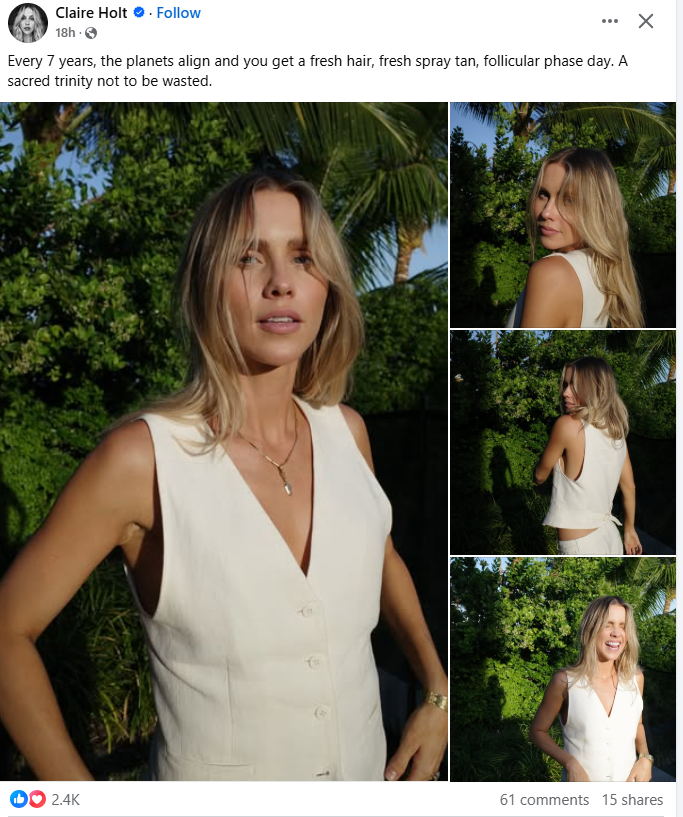
Example of High-Quality Post on Facebook -
Encourage Comment Threads Early
Facebook prioritizes posts that spark multi-comment discussions.
Prompt users with open-ended questions that require reflection or sharing experiences.
Monitor the post closely in the first hour and reply to comments quickly to keep the thread alive.
This sustains momentum and boosts visibility in more feeds.

Example of OP Responding To Comments -
Use “Show More” Triggers in Captions
Since Facebook lets users customize their feed with “Show More” and “Show Less” buttons, structure captions to encourage expansion.
Use curiosity-driven lines or incomplete thoughts in the first two lines that lead users to click “Show More,” signaling strong interest and increasing the post’s relevance score.
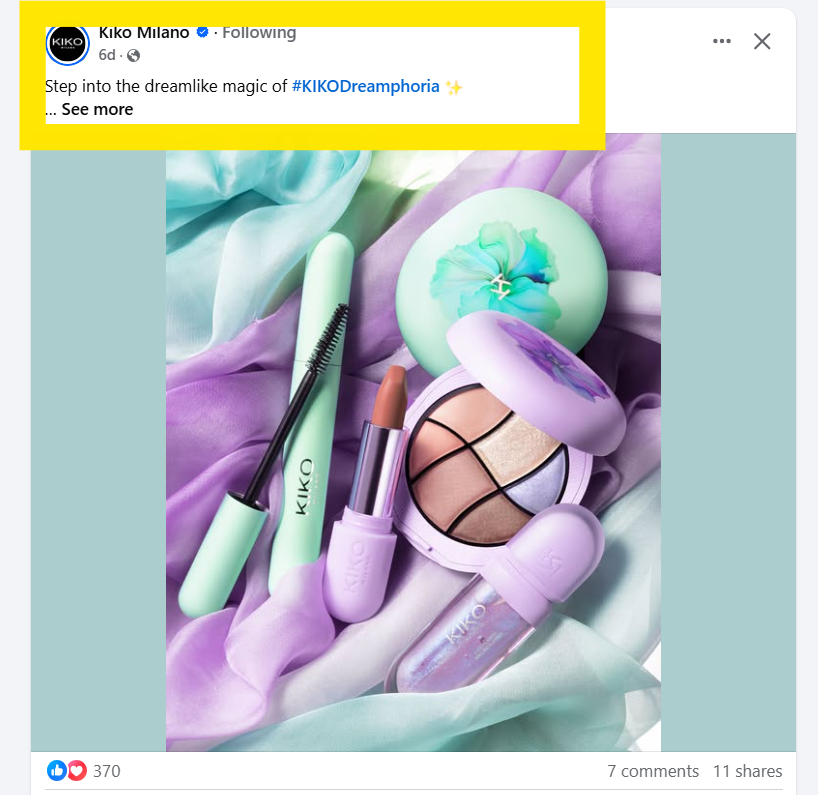
Example of “Show More” Post on Facebook -
Post Saveable Content Weekly
Create at least one piece of content each week designed specifically to be saved, like checklists, templates, or toolkits.
Saves indicate long-term value to Facebook, increasing the chance your future posts will get prioritized in the feed.
Pair saveable visuals with practical, action-based captions that highlight utility.
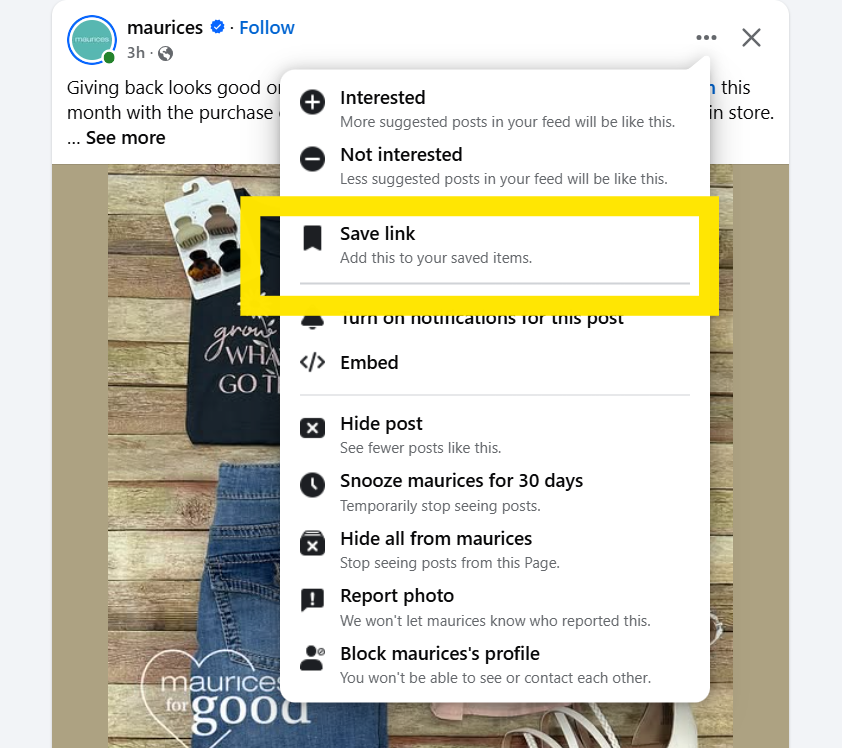
Example of How to Save a Post on Facebook -
Publish at Personalized Peak Times
Use your audience insights to identify your top-performing post times, which may vary by day.
Facebook now tailors visibility based on when individual users are most active, so publishing at optimal times gives your content a head start in engagement and relevance scoring.
-
Use Predictive Keywords in Your Captions
Facebook’s AI evaluates patterns in user behavior.
Tag posts with popular keywords and share content in relevant groups to boost the algorithmic “relevance score.”
For example, if your audience often engages with posts around “AI productivity hacks” or “budget skincare,” include those predictive keywords in the first two lines of your captions.
This helps the algorithm match your content with known user preferences and boosts distribution.
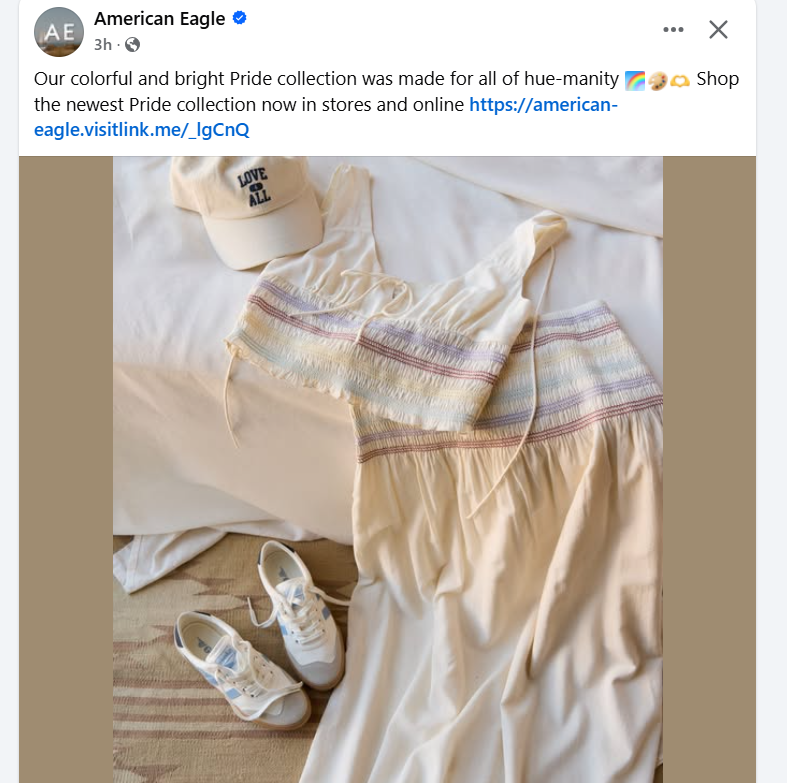
Example of Predictive Keywords in A Post -
Format Reels With 3-Second Visual Triggers
Facebook’s 2025 algorithm counts rewatches and completions more than total views.
Start Reels with a visual hook like a hand gesture, dramatic zoom, or moving text within the first 3 seconds to prevent swipes.
Avoid branded intros or static logos at the beginning—they reduce replay value.
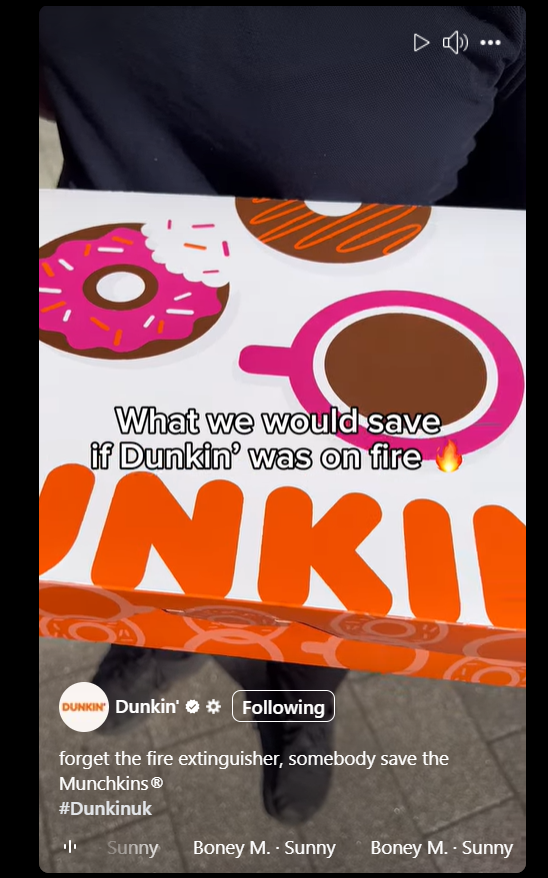
Example of Engaging Facebook Reel -
Turn Comments Into Content
When users drop thoughtful comments, reply publicly, and then repurpose them into future posts.
For example: “Last week, one of you said X—and it sparked a big idea.
Here’s what we think…” This turns passive engagement into an active content loop and makes commenters feel seen.
-
Use Facebook Live to Drive Real-Time Engagement
Facebook Live is one of the most powerful tools for creating real-time engagement.
It allows your audience to interact with you directly, asking questions, leaving comments, or reacting in real time.
Hosting live Q&A sessions, product reveals, or exclusive behind-the-scenes content helps you connect with your audience authentically.
Since Facebook prioritizes live video, you’ll also benefit from increased visibility in users’ feeds.
Encourage viewers to comment, share, or ask questions during the broadcast to maximize engagement.
-
Optimize for Silent Viewing
Many users browse Facebook in silent mode, especially when they’re scrolling through their feed in public spaces or during a quick break.
To ensure your content still grabs attention, use captions or text overlays on videos.
Visual storytelling becomes crucial here.
Make sure your videos can convey their message without sound.
This not only boosts engagement but also makes your content more accessible to users with hearing impairments.
Adding captions or even silent, subtitled videos can increase shareability and viewer retention.
Link to embed: https://www.facebook.com/reel/8920225564769975
-
Pin High-Engagement Posts to Boost Visibility
Pinning high-engagement posts to the top of your Facebook page can help keep your best content in front of your audience.
Posts that have already performed well—whether it’s due to comments, shares, or reactions—will have a higher chance of continuing to engage users if they’re pinned to the top.
This is especially effective for posts that announce a limited-time offer, highlight a popular product, or share important updates about your brand.
Pinned posts remain prominent, ensuring they are seen by more followers.
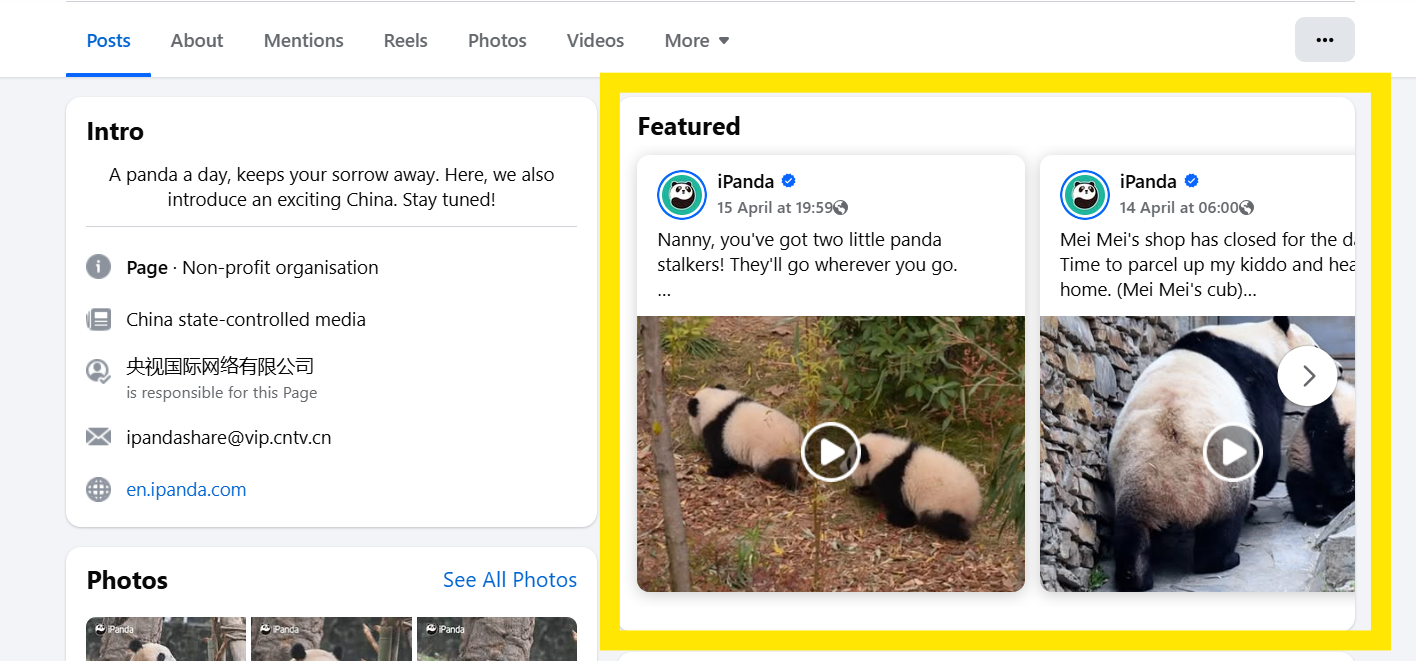
Example of Pinned/Featured Post on Facebook -
Monitor Your Analytics (Insights) to Adapt Content Strategy
Regularly checking your Facebook Insights can provide you with valuable information about how your content is performing and who your audience is.
Monitor key metrics like reach, engagement, and audience demographics to determine which types of posts generate the most interaction.
By understanding which content resonates with your followers, you can create more of what works and adjust your strategy for higher engagement.
Use these insights to test and refine your content approach continuously.
-
Use Meta Business Suite to Enhance Engagement
Meta Business Suite is a powerful tool for managing and optimizing your Facebook and Instagram presence.
It allows you to schedule posts, track performance, and manage your audience all from one place.
By using the suite’s insights, you can refine your content strategy based on user behavior and engagement trends.
This streamlines your workflow, saves time, and ensures your posts reach the right people at the optimal times for maximum engagement.
-
Batch Create and Schedule Posts for Consistent Engagement
Creating content in bulk and scheduling posts in advance can help maintain consistent engagement without overwhelming yourself.
This strategy also ensures that you’re consistently in your audience’s feed.
You can use Social Champ’s Facebook scheduler and content calendar to plan and schedule posts at optimal times based on your audience’s activity.
This approach allows you to maintain a steady presence and helps you stay consistent in delivering content that drives engagement, without the stress of daily posting.
-
Use Location Tags When Relevant to Expand Reach
Tagging your posts with relevant location tags can help you attract more local engagement and connect with users in your area.
Location tags are especially useful for businesses with physical stores, events, or services targeting specific geographic regions.
Adding location tags to posts and events helps increase your content’s visibility in local search results, attracting users who are more likely to engage with content that’s relevant to them.
Leveraging Social Champ to Navigate Facebook’s Algorithm
As Facebook’s algorithm continues to evolve, marketers face the task of optimizing their content strategies to reach wider audiences and maximize engagement.
With its constantly changing factors, the Facebook algorithm now places more emphasis on meaningful interactions, user-centric content, and timely posts.
Social Champ provides a powerful set of tools that help marketers and content creators adapt to these shifts, ensuring they can stay relevant and engage their audiences more effectively.
Social Champ’s core features—scheduling, analytics, content curation, and audience segmentation—align with Facebook’s algorithmic focus on high engagement, relevancy, and authenticity.
Let’s discuss this in detail.
-
Scheduling for Optimal Engagement
One of the most significant features that Social Champ provides is its post-scheduling functionality.
With its Facebook scheduler, you can plan and schedule months’ worth of content in one go and keep your account active with minimal effort and no daily hassle.
Best Time to Post Feature
Another standout scheduling feature of Social Champ is that it uses AI-powered insights to predict the best time you can post on Facebook.
With this tool, you can determine when your audience is most active and ensure that your posts go live at these peak times.
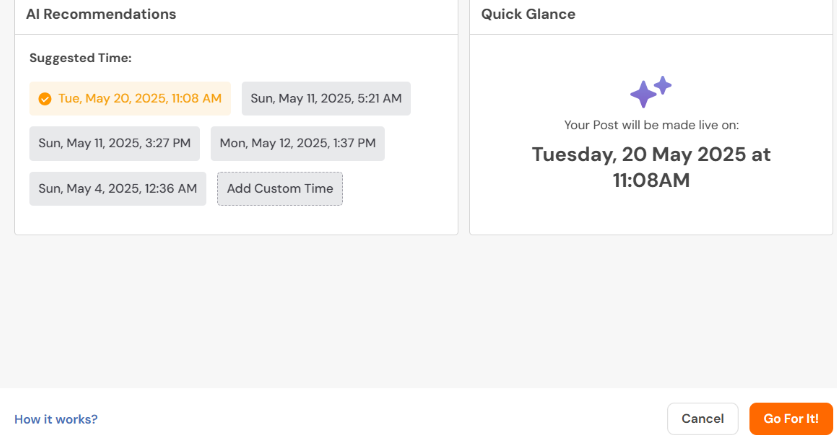
Social Champ’s Best Time to Post Feature Time Zones Feature
Social Champ also lets you adjust time zones for your posts.
This is particularly helpful for reaching global audiences across multiple regions.
Bulk Posting
Only got one day a week to keep your account running?
No worries. Social Champ handles that too. Its bulk schedule feature lets you schedule hundreds of posts in one go, so you can stay consistent for days with little to no manual involvement.
Consistently posting at optimal times enhances your chances of higher engagement, which, in turn, improves your content’s performance according to Facebook’s algorithm.
-
Analyzing Content Performance
Analytics are crucial to understanding what works and what doesn’t, and Social Champ offers a robust analytics suite that can significantly enhance your content strategy.
Facebook’s algorithm rewards content that garners high levels of engagement, such as comments, likes, shares, and overall interaction.
With consistent monitoring of your performance metrics, you can identify which posts resonate most with your audience.
This gives you a clearer picture of the type of content that generates the best response and helps refine your future strategies.
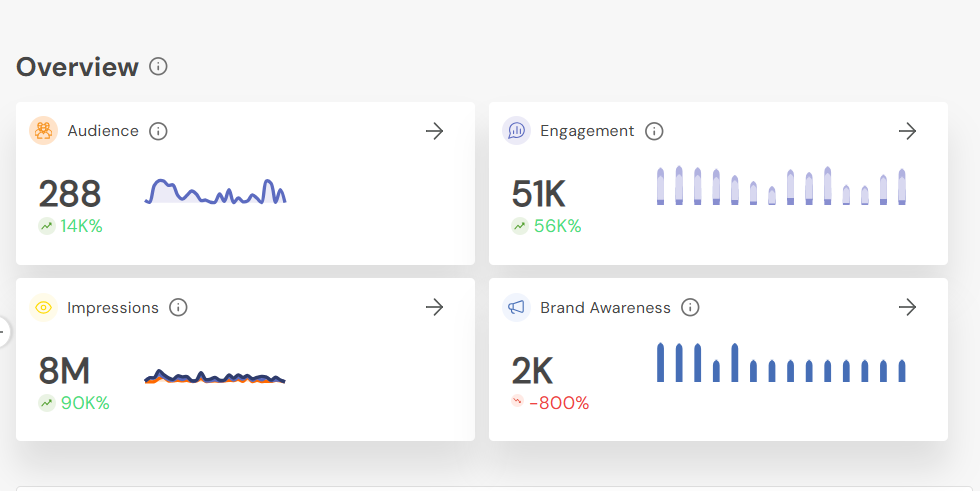
Social Champ’s Analytics Feature -
Content Creation for Increased Engagement
Thanks to its AI Suite and Facebook post generator, Social Champ enables you to create content like captions, graphics, and more, so you can share it directly with your post.
When this content resonates with your followers, they are more likely to engage, which, according to Facebook’s algorithm, signals that the content is valuable and relevant.
All you have to do is add the topic, and within moments, you’re presented with your content.
The best part is, that this feature is available for free Social Champ users too!
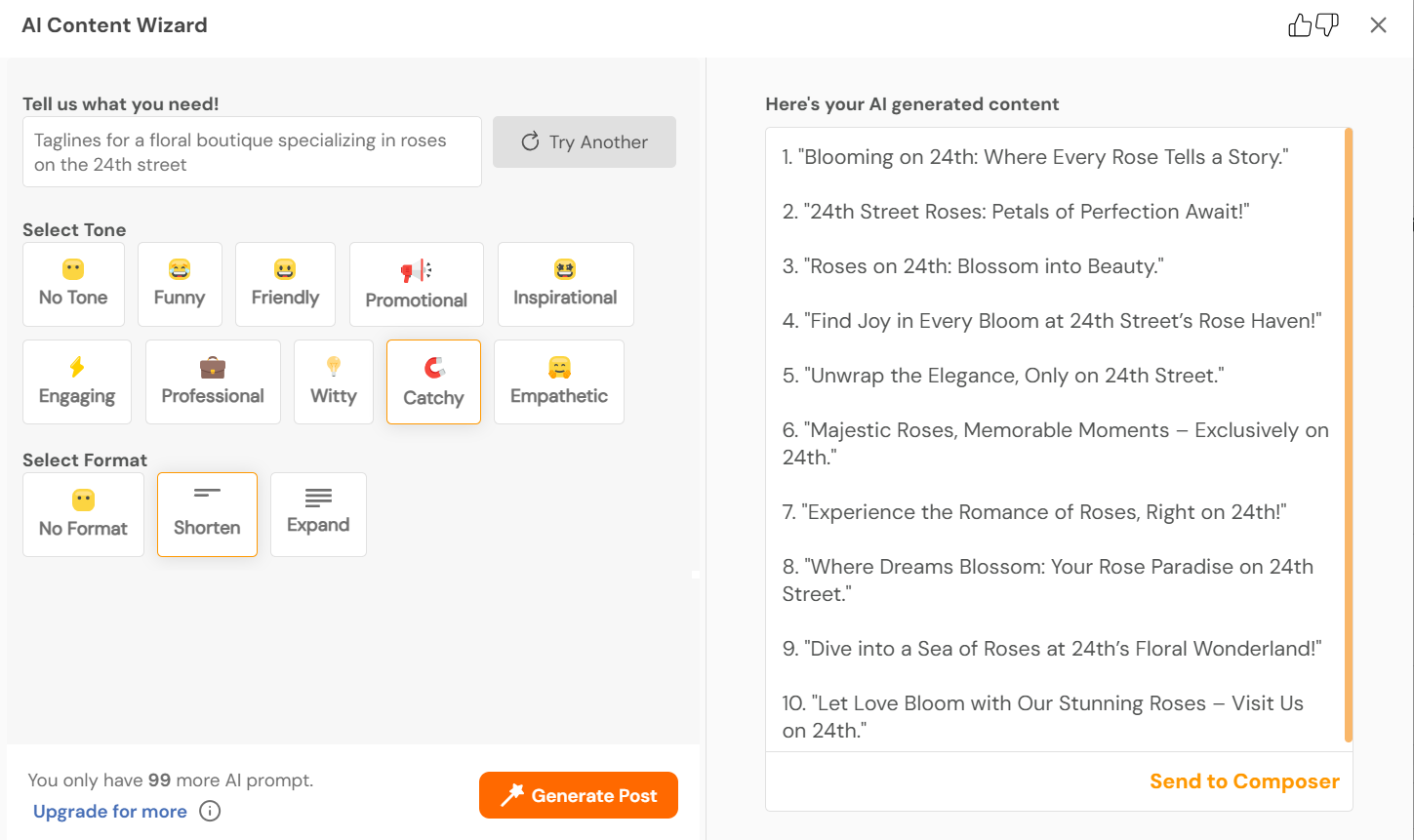
Social Champ’s AI Content Wizard Feature -
Using Hashtags to Boost Discoverability
Hashtags are an underutilized feature on Facebook but can be a powerful tool to improve the reach of your posts.
The Facebook algorithm rewards content that garners high engagement, and hashtags increase discoverability.
Social Champ provides detailed insights into hashtag performance as well as a hashtag-generating tool to make your strategy even more effortless.
However, it’s important to use hashtags thoughtfully.
Irrelevant or excessive hashtag use can lead to poor user experiences and lower engagement.
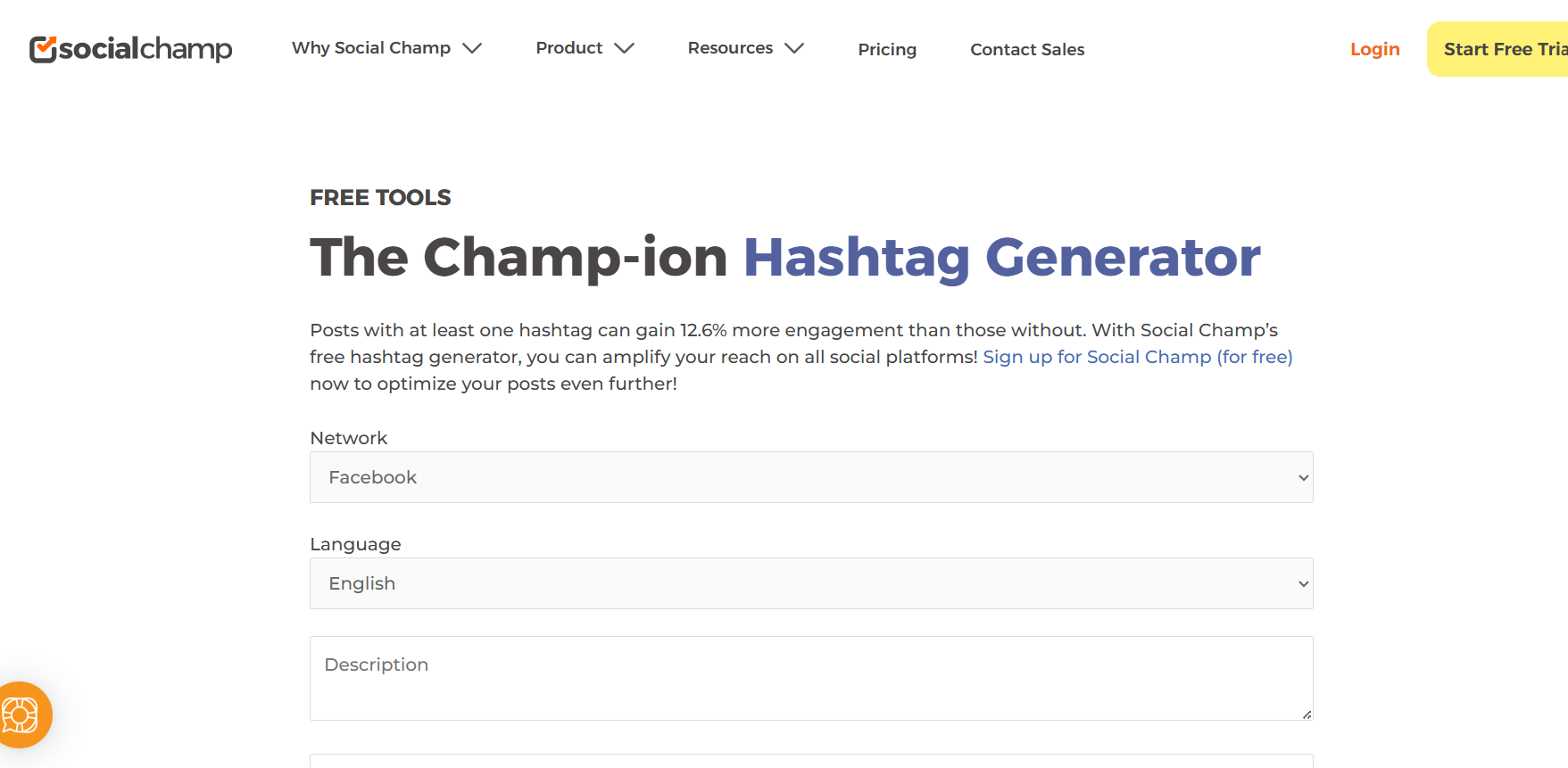
Social Champ’s Hashtag Generator -
Unified Social Inbox for Streamlined Engagement
Responding promptly to comments and messages fosters community and trust.
Social Champ’s unified social inbox consolidates all interactions, enabling you to manage and respond to audience engagement efficiently from a single dashboard.
-
Visual Content Optimization
Visual content plays a significant role in user engagement.
Social Champ’s integrations support Canva, Giphy, Flickr, Dropbox, Google Drive, and more.
It allows you to create, access, and manage engaging visuals without leaving the platform.
These integrations streamline the content creation process, making it easier to design attention-grabbing posts, repurpose assets, and maintain brand consistency across your Facebook presence.
Common Misconceptions About the Facebook Algorithm
For marketers and content creators, Facebook’s algorithm can feel like a moving target.
And over time, a lot of myths have taken root—some of which can hurt your content strategy more than help it.
Let’s set the record straight by addressing some of the most common misconceptions that still circulate in 2025.
The Algorithm Is Out to Suppress Your Reach
This is probably the most widespread myth.
Many creators assume Facebook’s algorithm deliberately hides their content.
In reality, the algorithm isn’t trying to silence anyone—it’s just selective.
It ranks content based on how likely it is to interest each user.
If your posts are getting less reach, it usually comes down to low engagement signals like limited likes, shares, or meaningful comments—not a conspiracy.
Only Videos Get Reach
Videos can perform well, sure. But that doesn’t mean other formats like image carousels, text-based posts, or link previews are doomed.
The 2025 algorithm is increasingly format-agnostic.
If your post sparks interaction or time spent viewing, it has a shot, regardless of format.
A carousel with tips, a strong one-liner with a compelling image, or even a thoughtful status update can all drive results if they connect with the audience.
You Have to Post All the Time to Stay Visible
More posts don’t automatically mean more reach.
On the contrary, overwhelming your audience or the algorithm with low-value content can backfire.
What matters more in 2025 is quality and consistency.
A smaller number of high-performing posts each week can build stronger engagement momentum than daily filler content.
The First Few Minutes Decide Everything
Early engagement can indeed help a post gain traction, but it’s not the only factor.
Facebook now continues to distribute content over longer periods, especially if it picks up interactions later.
A post that starts slow can still go wide if people begin to share or comment hours (or even days) after it goes live.
Engagement velocity helps, but longevity matters too.
Hashtags Are Useless on Facebook
Hashtags on Facebook aren’t as powerful as they are on platforms like Instagram, but that doesn’t make them irrelevant.
They can still improve discoverability when used strategically, especially for public posts or events tied to broader trends or campaigns.
Overusing them won’t help, but targeted, branded hashtags can still serve a purpose.
Engagement Bait Still Works
Asking people to “like if you agree” or “tag a friend” used to be a hack to drive engagement.
Now, it’s a red flag and considered engagement bait.
Facebook’s algorithm penalizes what it sees as engagement bait—interactions that don’t reflect genuine interest.
If your call to action feels forced or manipulative, it could hurt more than help.
Encouraging authentic conversation or asking thoughtful, relevant questions works far better.
Facebook Organic Reach Is Dead
While organic reach has undeniably declined over the years, it’s not gone.
What’s changed is the level of competition.
More content, more creators, and more branded posts mean more noise.
But there are still plenty of success stories where organic content drives meaningful results, especially when it’s well-timed, targeted, and backed by real value for the audience.
Facebook Boosting Is the Only Way to Succeed
Paid promotion has its place, but it’s not a silver bullet.
Boosting every post without a real strategy often leads to a wasted budget.
The 2025 algorithm rewards well-performing organic content first.
If a post is resonating naturally, then promoting it can extend its reach much more efficiently.
Relying solely on ads, without nurturing organic engagement, is rarely sustainable.
You Can Hack the Algorithm with One “Secret Trick”
There is no magic trick that can beat the algorithm.
It evolves constantly, pulling signals from thousands of behaviors and preferences.
What works for one brand might flop for another. Instead of chasing shortcuts, focus on learning what your specific audience responds to—and then build your strategy from there.

Need a Smarter Way to Plan Your Posts?
Social Champ’s easy-to-use scheduling tools ensure your content reaches the right audience at the perfect time, all the time.
Conclusion
In 2025, the Facebook algorithm is more dynamic and intelligent than ever before, driven by advanced AI systems that continuously learn from user behavior.
For marketers and creators, this means that success on the platform depends not on gaming the system but on understanding and aligning with how the algorithm works.
From prioritizing relevance and user engagement to meeting strict content quality standards, the path to visibility is paved with strategy, consistency, and authenticity.
Social Champ further simplifies this process by helping schedule content at optimal times, analyze performance trends, and maintain a steady publishing cadence, ensuring your efforts are not only visible but impactful.
Frequently Answered Questions
1. How Does the Facebook Algorithm Determine Which Posts to Show?
The Facebook algorithm uses AI and relevance scores to show posts based on a user’s past behavior, interactions, and content preferences. It prioritizes posts that encourage meaningful engagement, such as comments, shares, and reactions, while de-prioritizing clickbait or low-quality content.
2. What Types of Content Are Favored by the Facebook Algorithm in 2025?
In 2025, the Facebook algorithm favors video content, especially live videos and interactive formats like polls and quizzes. It also prioritizes authentic content that sparks meaningful conversations, images, and posts with higher engagement rates, along with content that aligns with users’ interests and past interactions.
3. How Can I Increase My Content’s Reach on Facebook?
4. Does Using External Links Affect My Post’s Visibility?
Yes, posts with external links might receive lower visibility as Facebook tends to prioritize content that keeps users on the platform. However, linking to high-quality, relevant sources or content that generates engagement can still be beneficial. It’s best to balance posts with links and those with native content for better reach.
5. What Role Do Comments and Reactions Play in Content Ranking?
Comments and reactions are crucial for content ranking in Facebook’s algorithm. Posts that generate more meaningful interactions, such as thoughtful comments or reactions, are seen as more valuable and are likely to appear higher in users’ feeds. The algorithm prioritizes posts that encourage real engagement over those that receive passive reactions.
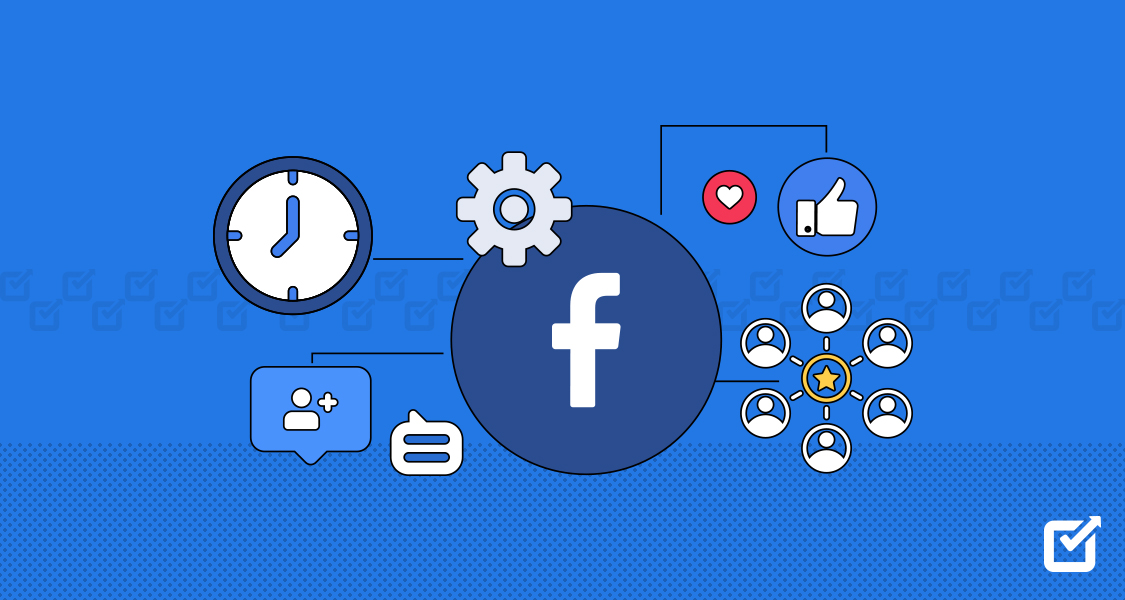
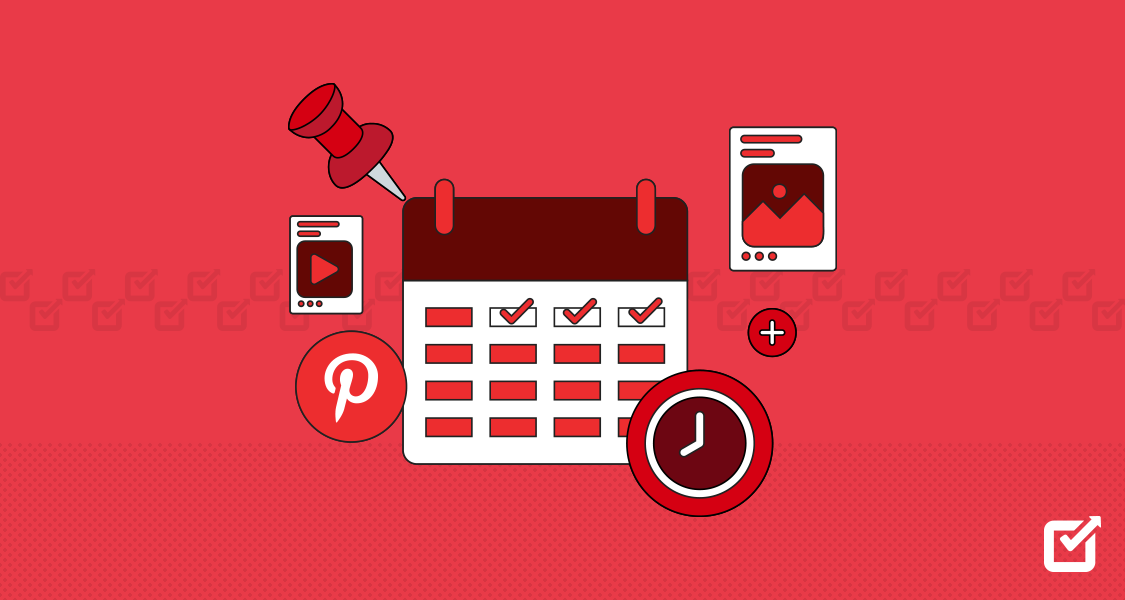


5 comments
debora
Very interesting and different ideas you have put up in this article. Thank you for adding to our knowledge with these insightful points and everything is explained really well.
Jonas Wilde
Well-written information about the Facebook algorithm. Good job.
Jenn More
The ever evolving Facebook algorithm has me searching for articles all the time
Emma
This is an wonderful article. I did not know about the Facebook news feed thing. Now I know how to optimize the Facebook news feed for the target users. Awesome
Lucas
Hey Yumna! Great article on the Facebook algorithm. I found some good tips which I didn’t know before. I will apply some in the future.